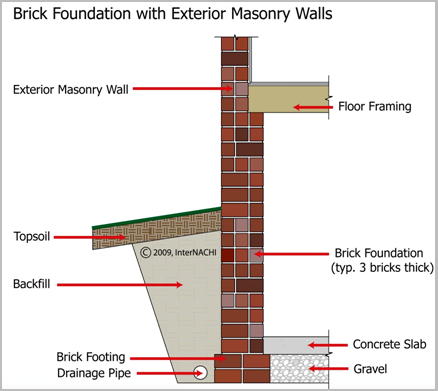Earthquake Resistant Building Construction - part 2
While we have seen about the reasons for an earthquake, and how earthquake resistant building construction is different, reinforced concrete buildings and other things in our previous blog let us see more on the roles of floor slabs and masonry walls and much more in this blog.
Roles of Floor Slabs and Masonry Wall

The floor slabs are horizontal elements, t facilitates functional use of buildings. Usually, beams and slabs at one storey level are cast together, but, in residential multi storied buildings, the thickness of slab will be only about 110 mm -150 mm. when beams bend in a vertical direction during earthquakes, these thin slabs bend along with them. When beams move in the horizontal direction, the slab usually forces the beams to move together with it.
However, in most of the buildings, the geometric distortion of the slab is insignificant in the horizontal plane; the behavior is known as rigid diaphragm action. After columns and floors in an RC, a building is cast and the concrete hardens, vertical spaces between columns and floors are usually filled in with masonry walls to separate floor area into functional spaces. Usually, these masonry walls are called infill walls, are not connected to surrounding RC beams and columns. When the columns receive horizontal forces at floor levels, they try to move in the horizontal direction, but masonry wall tends to resist this movement.
Due to the heavy weight and thickness, these walls develop cracks once their ability to carry horizontal load is exceeded. Thus, infill walls act like sacrificial fuses in the buildings, and they develop crack under severe ground shaking but help share the load a load of beams and columns until cracking.
Strength Hierarchy
For a building to remains a feuding earthquake shaking columns which receive forces from beams; should be stronger than beam sand foundations that receive forces from columns and should be stronger than columns. While adding the connections between beams and columns, columns and foundations should not fail so that beams can safely transfer forces to columns and columns to foundations.
When this strategy is adopted in the design, the damage is likely to occur first in beams. When beams are detailed correctly to have large ductility, the building as a whole can deform by large amounts despite the progressive damage caused due to consequent yielding of beams. If the columns are made weaker, then localized damage can lead to the collapse of building, though columns at storey above remain almost undamaged.
Earthquake Resistant Building
The engineers do not effort to make earthquake proof buildings that will not get damaged even during the rare but strong earthquake; such buildings will be too robust and also be too expensive. Instead, engineering intention is to make buildings earthquake resistant, such building resists the effects of ground shaking, although they may get damaged severely but would not collapse during the strong earthquake. Thus, a safety of peoples and contents is assured in earthquake resistant buildings and thereby, a disaster is avoided. This is a major purpose of seismic design codes through the world.
Earthquake Design Philosophy
The earthquake design philosophy may be summarized as follows:
- Under minor, but common shaking, the main members of the building that carry vertical and horizontal forces should not be injured; however, the building parts that do not carry load may carry on repairable damage.
- Under modest but occasional shaking, the main member may sustain repairable damage, but the other parts of the building may be damaged such that they may even have to be replaced after the earthquake.
- Under strong but rare shaking, may sustain severe - even irreparable damage, but the building should not collapse.
Hence, after minor shaking, the building will be operational within a short time and repair cost will be small and after moderate shaking, the building will be operational once the repair and strengthening of the damaged main members are completed. But, after a strong earthquake, the building may become dysfunctional for further use but will stand so that people can be evacuated and property recovered.
The consequences of damage have to be kept in view in the design philosophy. For example, important buildings like hospitals and fire stations play a critical role in post-earthquake activities and must remain functional immediately after an earthquake. These structures must sustain very little damage and should be designed for a higher level of earthquake protection. The collapse of dams during an earthquake can cause flooding in the downstream reaches, which itself can be a secondary disaster. Therefore, dams and nuclear power plants should be designed for a still higher level of earthquake motion.
Remedial Measures to Minimize the losses due to Earthquakes
Whenever a building project is prepared and designed, the first and the most important aspect of a design is to know the zone to which this structure is likely to rest. Depending upon these, precautionary measures in structural design calculation are considered and structure can be constructed with sufficient amount of resistance to earthquake forces. Various measures to be adopted are explained point wise, giving emphasis to increase earthquake resistance of buildings.
Building planning
The records of various earthquake failures reveal that unsymmetrical structure performs poorly during an earthquake. The unsymmetrical building usually develops torsion due to seismic forces, which causes the development of crack leading to a collapse of a structure. The building, therefore, should be constructed rectangular and symmetrical in plan .If a building has to be planned in irregular or unsymmetrical shape, it should be treated as the combination of a few rectangular blocks connected with passages. It will avoid torsion and will increase the resistance of building to earthquake forces.
Foundation
IS code recommends that as far as possible entire building should be founded on uniform soil start a. It is essentially to avoid differential settlement. In case if loads transmit on a different column and column footing vary, the foundation should be designed to have a uniform settlement by changing foundation size as per code conditions to have a loading intensity for consistent settlement.
While Raft foundation performs better for seismic forces. If piles are driven to some depth over which a raft is constructed the behavior of foundation under seismic load will be far better. Piles will take care of differential settlement with raft and resistance of the structure to earthquake forces will be very huge.
Provision of Band
However, IS code recommends construction of concrete band at lintel level to oppose earthquake. The studies revealed that building with the band at lintel level and one at plinth level improves load carrying of building to earthquake tremendously. It is recommended here that if bands are plinth level, skill level, lintel level and roof level in the case of masonry structure only, the resistance of building to the earthquake will increase extremely. The band at sill level should go with a vertical band and door openings to meet up at lintel level. Hold fast of doors can be fitted with their ill band. In the case of the earthquake of very high intensity or large duration only in fill wall between walls will fail to minimize casualties and sudden collapse of the structure. People will get enough time to escape because of these bands.





